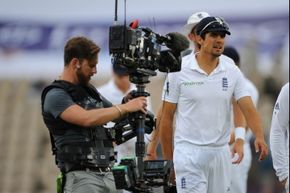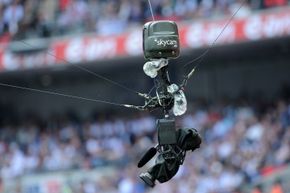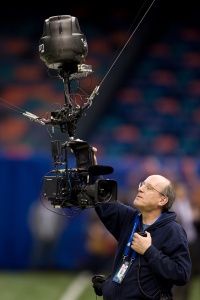It swoops and dives like an enormous flying arachnid from your worst nightmares. But it's not a black widow that grew up too close to a nuclear power plant. Instead, it's a rather ominous (and still spider-like) camera contraption dangling in the air, chasing football players as they run for their lives (or a touchdown).
It's Skycam, the original flying camera, and you've probably seen plenty of footage created by this radical-looking gizmo. Skycam is a wire-flown, remote-controlled camera, and it's been zooming around stadiums and other venues for years now, providing fantastic camera views that would otherwise be nearly impossible to achieve.
Advertisement
With Skycam, people who watch American football on television have a bird's eye view just above and behind the quarterback. Compared to old sideline views, Skycam is almost like being in the huddle.
Not sure if you know exactly what Skycam is? If you've ever watched a major sporting event on television, such as NFL Sunday Night Football, you may have intermittently caught a glimpse of an airborne device gracefully floating above the field, hanging from multiple ropes. That's the Skycam system.
Skycam offers a video-game-type view that leans heavily on modern technologies. Without fast computers and user-friendly software, as well as some really strong guide ropes, the whole setup would be unfeasible.
But thanks to smart engineering, Skycam is now nearly a staple of broadcasting for special events. Keep reading and you'll see how video cameras grew wiry wings and took to the air.
Advertisement



